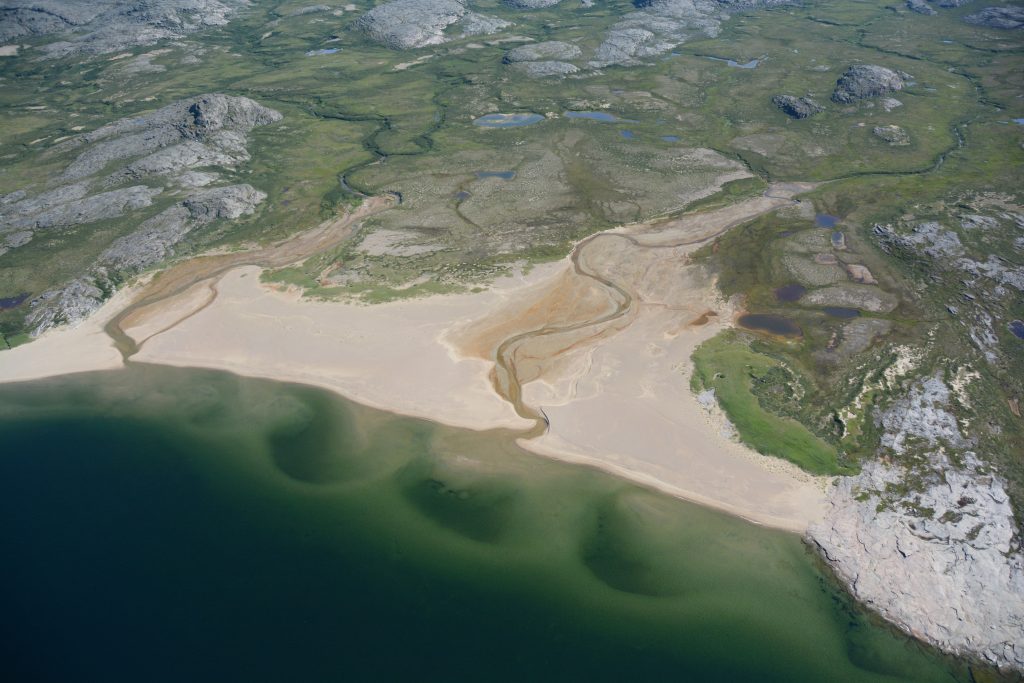Nunavik is gaining ground while other coastlines erode
But climate change still poses risks to region’s coastal communities.

If you stand on the beach in Kuujjuaraapik on the Hudson Bay coast, your feet are firmly planted in Nunavik and, furthermore, Quebec.
But if you dip your toes in the frigid water, they are now in Nunavut.
The strange circumstances of Quebec’s northern border are a source of contention for the provincial government, which has sought to extend its jurisdiction into these waters.
But in the meantime, as a result of geomorphological changes, Nunavik is literally gaining ground.
While some other Arctic shorelines are eroding due to permafrost thaw or diminishing sea ice — take Tuktoyaktuk, Northwest Territories, for example — Nunavik’s shoreline is seeing the opposite.
What’s happening is a process called glacial isostatic adjustment, or glacial rebound. That’s when land once compressed by the weight of glaciers some 10,000 years ago is still slowly bouncing back to its natural height.
It’s rising at a rate of between five and 13 millimeters per year, according to a recent study.
“There are very few places in the world where we can see sea level fall,” said Antoine Boisson, who completed his PhD by taking an inventory of the Nunavik coastline, its unique features and evolution.
His thesis hasn’t yet been validated by Environment Canada, but that process is underway through its eSPACE program on Arctic coastal ecosystems.
Boisson’s work, under the supervision of Laval University’s Michel Allard, was in partnership with Quebec’s Ministry of Sustainable Development, Environment and Fight Against Climate Change, and will be used by the Kativik Regional Government in developing community emergency responses and land-use plans.
Up until now only a few studies have been done on portions of the Nunavik coastline, and in varying detail.
“Research on coastal processes and landforms in Nunavik is scattered,” Boisson said.
He said his work is the first comprehensive look at the entire 10,000-kilometer stretch of the coastline from Kuujjuaraapik to the eastern tip of Ungava Bay.
This included a survey by helicopter where researchers captured 47 hours of video and 40,000 photographs of Nunavik’s three coastal regions: Hudson Bay, Hudson Strait and Ungava Bay.
In all three regions, glacial rebound is mitigating the impacts of climate change and coastal risks affecting most other areas.
“In Kuujjuaraapik, the emergence rate is 1.3 meters per century. The land is emerging at a huge rate,” said Boisson.
Surpassing sea level rise, this emergence of the land is creating coastal features like raised beaches and boulder barricades — various rows of boulders up the sloping shore, as Boisson documented in Ungava Bay.
There are also areas where, unlike in most Arctic regions, the permafrost has been increasing in thickness since 2010 due to lower temperatures — though this isn’t the norm across Nunavik.
“When I speak at international conferences, I’m maybe the only one that sees sea level fall, the emergence of land and almost no erosion,” said Boisson.
But, he added, coastal risks shouldn’t be underestimated, because an increase in storm surges, which is when the sea level rises during a storm, and other variables could still threaten communities.
And there are outliers among the formations he’s studied, including a sand cliff in Umiujaq that has eroded at a rate of one meter per year for the past five years.
Areas like this, with little protection from islands off the coast, are more vulnerable to coastal erosion. That’s because the wind has a greater distance to pick up speed, creating big waves, as well as storm surges.
In the future, events like surges and permafrost thaw could be a particular risk for communities on sandy grounds, like Umiujaq, Inukjuak, Akulivik and Salluit, which lack the stability of a rocky coastline.
“Coastal erosion is considered low compared to other regions, like Tuktoyaktuk, but it should not be overlooked,” said Boisson.
Global sea level rise is expected to continue to exceed the rate of land elevation, but on the Nunavik coast, the sea level will still fall for the next hundred years, only at a gradually lower rate, according to his research.
But more study is needed in this area, Boisson said, to capture the dynamic nature of the coast and where risks could exist.